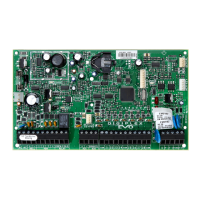Version 7.11
Things You Need to Know | 3
Things You Need to Know
About this Programming Guide
Use this programming guide to record programmed settings for your Digiplex EVO control panel. This guide should be used along
with the Digiplex EVO Installation Guide (available online only) whenever installing or programming your Digiplex EVO system.
Conventions
The following typographical conventions are used throughout this guide:
Installer Code
The default installer code is 000000. This code allows you to enter programming mode, where you can program all features,
options, and commands of your EVO control panel. To change the installer code, refer to Installer Code Programming on page 30.
System Master Code
The default system master code is 1234 or 123456. This code allows you to utilize any arming method, as well as program user
codes. This code can be either four or six digits long.
Panel Reset
Performing a panel reset will reset all panel settings to their preset, default values, or custom settings (if already programmed). To
perform a panel reset, press and hold the panel’s
RESET and AUX buttons for four seconds, or refer to Software Reset on page 59.
Entering Programming Mode
To enter programming mode, proceed as follows:
1. Press and hold the 0 key.
2. Enter your installer code (default is 000000). Refer to Installer Code for details.
3. Enter the four-digit section you wish to program.
4. Enter the required data and record your settings using the worksheets included in this guide.
Decimal and Hexadecimal Programming Table
Certain sections may require the entry of one or more hexadecimal values from 0 to F.
K641R/K641LX/K641+ Keypads
Section numbers appear in bold typeface, enclosed by brackets: e.g., Enter a section
number between [0501]...
WARNING: Important information
Keypad keys and control panel labels appear in small caps, bold typeface: e.g., Press
0, and then
ENTER to clear a zone’s serial number...
NOTE: Suggestion or reminder
Default Settings: Values which appear in bold typeface and/or are preceded by the symbol , signify the default value:
e.g., User code length:
6 digits 4 digits (4 digits is the default value)
Table 1: Decimal and Hexadecimal Values Using the K641R, K641LX or K641+ Keypads
Key
Value or Action
0 to 9 0 to 9 (hex and decimal)
STAY A (hex only)
FORCE B (hex only)
ARM C (hex only)
DISARM D (hex only)
BYP E (hex only)
MEM F (hex only)
CLEAR Exit section without saving (hex and decimal)
ENTER Save current data and advance to next section (hex only)

